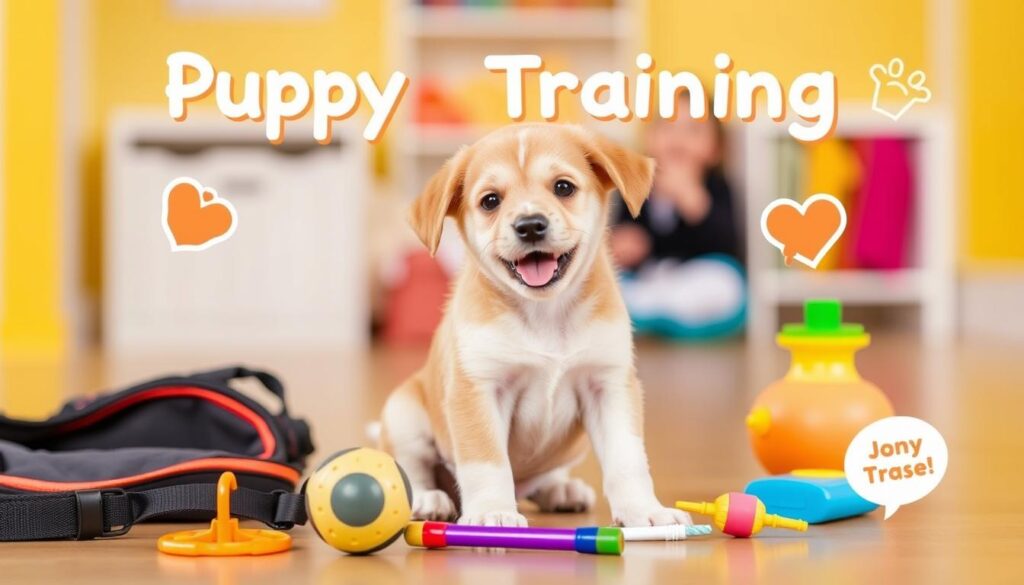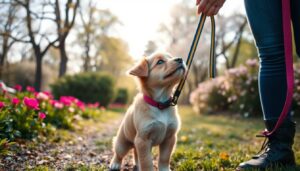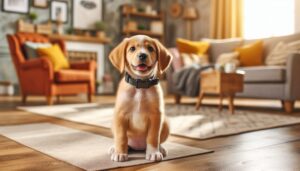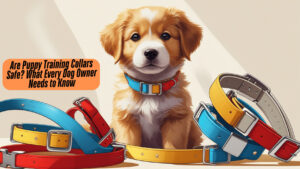Picture a playful puppy, jumping around, knocking over furniture, and leaving little surprises for you to find. It’s funny at first, but the chaos can turn overwhelming. Fortunately, with the right training plan, you can transform that energetic ball of fur into a well-behaved companion. This article will guide you through a 30-day training program that covers the essential steps, helping you avoid common mistakes along the way. Early puppy training not only reduces behavioral issues but also strengthens your bond.
House Training Your Puppy: A 30-Day Guide
Establishing a Routine
Creating a consistent routine is crucial for house training success. Puppies thrive on predictability. Set regular feeding, potty break, and sleep times. Research shows that puppies trained with a predictable schedule have a higher success rate in house training, with nearly 90% achieving success within a month.
Identifying and Preventing Accidents
Watch for signs that your puppy needs to go outside. Common behaviors include circling, whining, and sniffing around unusually. To prevent accidents, utilize crate training by providing a safe space and tethering your puppy when you’re unable to supervise closely.
Rewarding Success
Positive reinforcement works wonders. When your puppy goes outside and does its business, celebrate that achievement! Use treats and enthusiastic praise to reinforce good behavior. For example, if your puppy successfully potties outside, offer a favorite treat right away. This encourages the behavior to repeat.
Basic Obedience Puppy Training: Mastering the Essentials
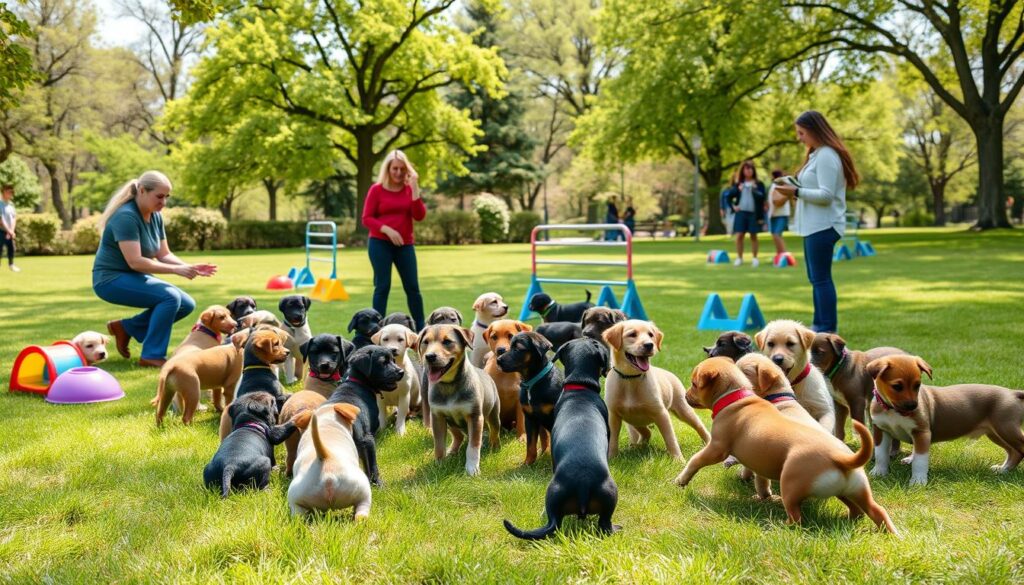
Sit, Stay, and Come
Teaching basic commands is essential for safety and communication.
- Sit: Hold a treat above your puppy’s nose and move it back. As your puppy sits, say “Sit” and reward it.
- Stay: Ask your puppy to sit. Show your palm and say “Stay.” Step back slowly; reward if it stays in place.
- Come: Use a leash, gently pull your puppy towards you while saying “Come,” and reward as it approaches.
Leash Training
Leash training helps make walks pleasant. Start with short distances, rewarding your puppy for staying close. A certified dog trainer once noted, “Early leash training ensures a safer and more enjoyable experience for both puppy and owner.”
Recall Training
A reliable recall command is vital. Use treats and play to make coming when called fun. Toss a toy and call your puppy back, rewarding it once it returns.
Socialization and Handling: Preparing Your Puppy for the World
Puppy Socialization
Introducing your puppy to other dogs and people early on is vital. Puppies that experience diverse environments are less likely to develop behavioral problems as adults. Studies indicate that well-socialized dogs are more confident and less fearful.
Handling and Grooming
Getting your puppy comfortable with handling can make vet visits easier. Examine its paws, ears, and teeth gently. Use treats during these sessions to create positive experiences.
Introducing New Environments
Expose your puppy to various environments gradually. Start with quiet areas and slowly progress to busier places. This gradual exposure helps prevent fear and anxiety.
Addressing Common Puppy Behavior Issues
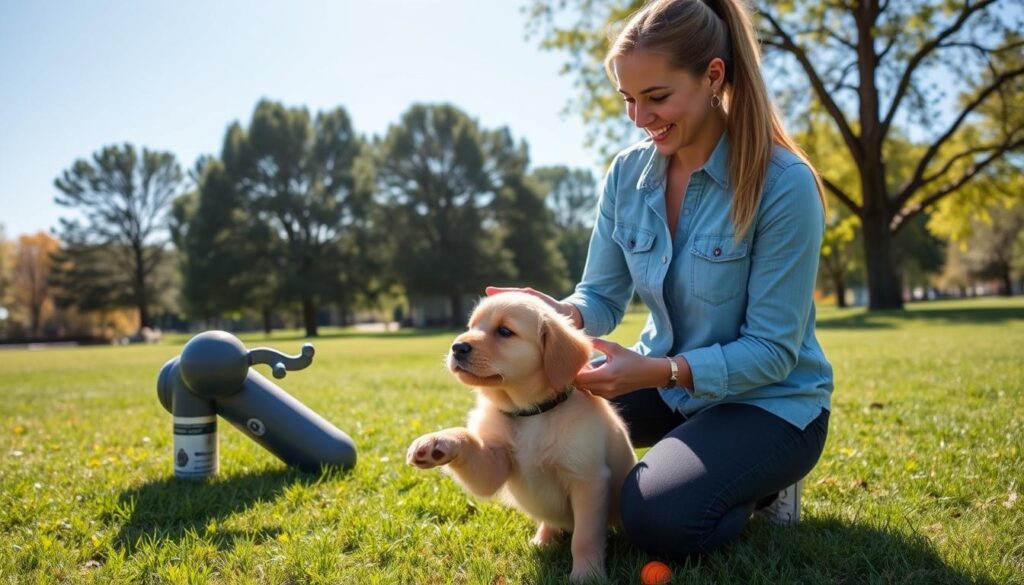
Biting and Nipping
Puppies tend to bite during play. Redirect this behavior by offering toys instead of your hands. If biting occurs, immediately stop playing to show that biting ends the fun.
Excessive Barking
Identify what triggers your puppy’s barking. Common causes include boredom or fear. Using positive reinforcement to reward quiet behavior can help manage excessive barking.
Destructive Chewing
Puppies chew for various reasons, including teething and boredom. Provide plenty of appropriate chew toys to redirect their chewing instincts. Encourage these safe alternatives and praise when they choose them.
Advanced Training Techniques and Resources
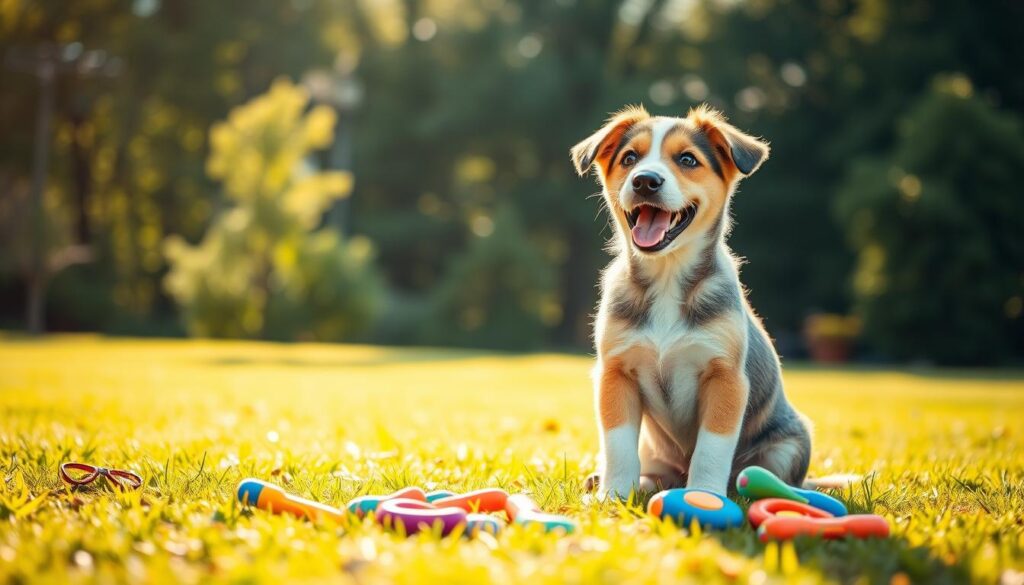
Clicker Training
Clicker training provides clear communication. To start:
- Get a clicker and some treats.
- Click when your puppy does something right, followed by a treat.
- Repeat this process to strengthen the connection between the click and reward.
Professional Help
When to seek help? If you notice persistent behavioral issues, consider contacting a certified dog trainer or veterinarian behaviorist for guidance.
Online Resources
Explore reputable websites like the American Kennel Club or books such as “The Puppy Primer” for additional tips. These resources can enhance your training journey.
Conclusion
Training your puppy in 30 days is achievable with patience and consistency. Key takeaways include establishing routines, using positive reinforcement, and gradually exposing your puppy to new experiences. Remember, the effort you put into training today will lead to a well-adjusted dog tomorrow. Embrace the journey – training a puppy is a rewarding experience that strengthens your bond and enriches your life. Start this beautiful adventure today!
FAQ
What is the key to successful puppy training?
Consistency, positive reinforcement, and starting simple are key. Training a puppy needs dedication and patience. Remember, every puppy learns at their own pace.
How can I create the perfect training environment for my puppy?
Choose a safe, quiet area for training. You’ll need treats, toys, and a crate. Knowing your puppy’s age and stage helps tailor your training.
What are the effective training techniques for puppies?
Positive reinforcement is very effective. It uses rewards like treats and praise. This makes training fun and strengthens your bond.
Dog obedience training is also crucial. It teaches basic commands like “sit,” “stay,” and “come.” This keeps your puppy safe and you at ease.
Why is it important to build a lasting bond through puppy training?
Training builds trust, respect, and communication. It’s more than just teaching commands. It’s about creating a strong, happy relationship.
By being consistent, patient, and positive, you can raise a well-behaved, loyal companion.
What are the benefits of puppy training classes?
Classes offer socialization and expert advice. They help your puppy become confident and well-adjusted. They meet new people and animals.
A professional trainer ensures you’re using the best methods. They help with any behavioral issues early on.
How do I house train my puppy?
House training needs a routine and positive rewards. Take your puppy out after meals, naps, and play. Reward them when they go outside.
Be patient and consistent. Puppies take time to learn and understand what’s expected.
